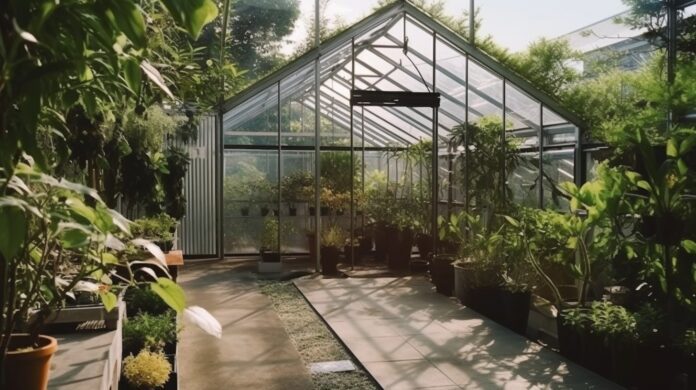Imagine turning your kitchen scraps and garden waste into a precious resource for your plants. That’s the magic of composting, an eco-friendly solution to boost your garden’s health while reducing landfill waste. In this blog, we’ll explore the art of transforming ordinary household waste into nutrient-rich soil that will give your garden a new lease on life.
What Is Composting and How Does It Work?
Composting is the process of breaking down organic materials, such as food scraps, leaves and grass clippings, into nutrient-rich soil for your garden.
Benefits Of Composting for Soil Health
Composting is a game-changer for every gardener seeking to cultivate thriving and healthy plants.
The natural process of decomposition in compost heaps releases essential nutrients such as nitrogen, phosphorus, and potassium – these are vital ingredients for plant growth.
As you incorporate organic matter from your kitchen scraps or garden waste into the mix, beneficial microorganisms work tirelessly to break it down further. These tiny helpers enhance soil structure by promoting good aeration and drainage while also retaining moisture when needed.
This rich concoction ensures that your Halls Greenhouses or wooden greenhouses remain filled with flourishing plants throughout the seasons.
Materials Required for Composting
Gathering the right materials is a crucial step in creating a successful compost pile, which can lead to nutrient-rich soil for your garden. For instance, green waste – typically composed of grass clippings, vegetable remnants and fruit peels – provides nitrogen and moisture that are essential for breaking down organic matter.
In addition to these primary components, having a mix of different-sized particles will expedite the decomposition process: larger items create air pockets essential for maintaining good airflow throughout the pile; smaller pieces break down faster and increase surface area exposure to microorganisms responsible for decomposition.
How To Compost for Your Garden
To get started with composting, you’ll need to choose the right method and location based on your specific needs.
Choosing The Right Composting Method and Location
Selecting the appropriate composting method and location for your garden plays a crucial role in ensuring a successful process. There are several methods to choose from, such as traditional pile composting, compost bins, tumblers, or worm composting (vermicomposting).
Each has its unique advantages and considerations. For instance, traditional pile composting is cost-effective but may require more maintenance than using a tumbler.
Choosing an optimal location is equally important when setting up your composter. Factors to consider include convenience of access for adding materials and harvesting finished compost as well as proximity to water sources since maintaining moisture levels is essential for decomposition.
Additionally, find a level surface with good drainage away from any outdoor living areas.
Maintaining And Harvesting Your Compost
Maintaining and harvesting your compost is key to ensuring a healthy nutrient-rich garden. It’s important to monitor the moisture level of your compost regularly, ensuring it remains moist but not too wet.
To harvest your compost, look for signs that it’s ready such as its dark color and crumbly texture. Simply use a fork or spade to remove the top layer of material before collecting from underneath.
Remember to turn your compost pile every few weeks using a pitchfork or similar tool. This helps aerate the mix and increases decomposition efficiency by reintroducing oxygen throughout each layer.
By following these simple steps, you’re sure to have an abundance of rich soil ready for planting within no time at all!
Tips For Successful Composting
To ensure successful composting, keep the C-to-N ratio balanced by adding equal amounts of green and brown materials; avoid meat, dairy, and oil-based products; turn the pile every few weeks to aerate it; and use the nutrient-rich compost in your garden for healthier plants.
Balancing Carbon-to-Nitrogen Ratio
Balancing the carbon-to-nitrogen ratio is important for successful composting that will result in nutrient-rich soil. Carbon-heavy materials like leaves and woody branches provide structure to the compost, while nitrogen-rich materials like food scraps and grass clippings provide the necessary nutrients.
To achieve a balance, aim for a ratio of roughly 25-30 parts carbon to one part nitrogen. Too much carbon slows down decomposition, while too much nitrogen can lead to unpleasant odours or even attract pests.
Experiment with different ratios until you find what works best for your compost pile. Remember, brown and dry materials such as shredded newspaper or twigs are typically high in carbon while green and wet materials such as fruit peels or coffee grounds are rich in nitrogen.
Avoiding Certain Materials
It’s important to be mindful of what materials you add to your compost pile. Certain items may not break down properly and can even harm plant growth. Avoid adding meat, dairy, or oily foods as they attract pests and could cause unpleasant odours.
Additionally, it’s wise to avoid synthetic chemicals such as pesticides or herbicides in your compost mixture – these can kill beneficial microorganisms that facilitate decomposition.
Finally, while wood chips can be included in moderation, it’s advised not to use treated lumber which may contain harmful toxins that could contaminate your soil over time.
Help keep news FREE for our readers
Supporting your local community newspaper/online news outlet is crucial now more than ever. If you believe in independent journalism, then consider making a valuable contribution by making a one-time or monthly donation. We operate in rural areas where providing unbiased news can be challenging. Read More About Supporting The West Wales Chronicle


























